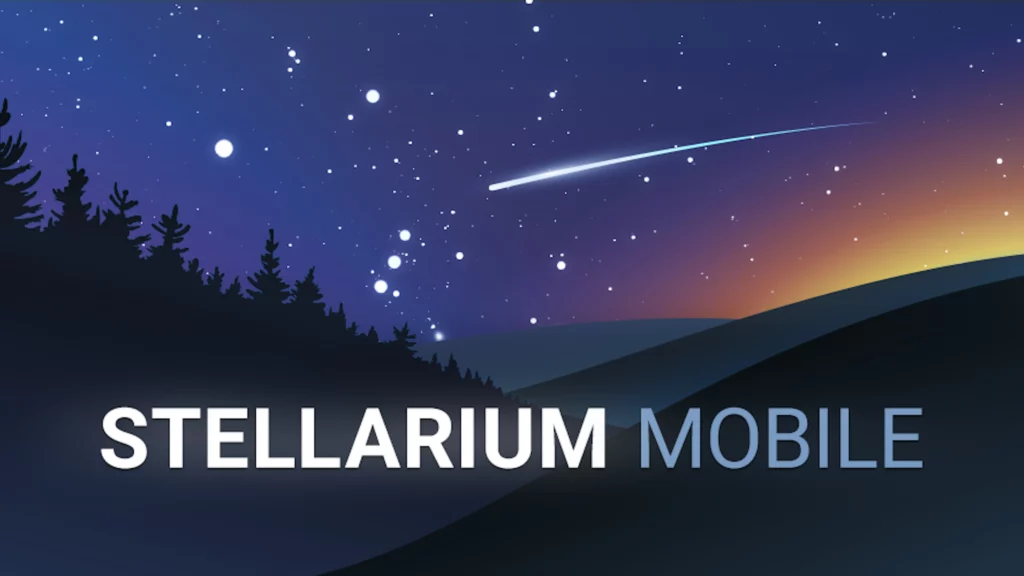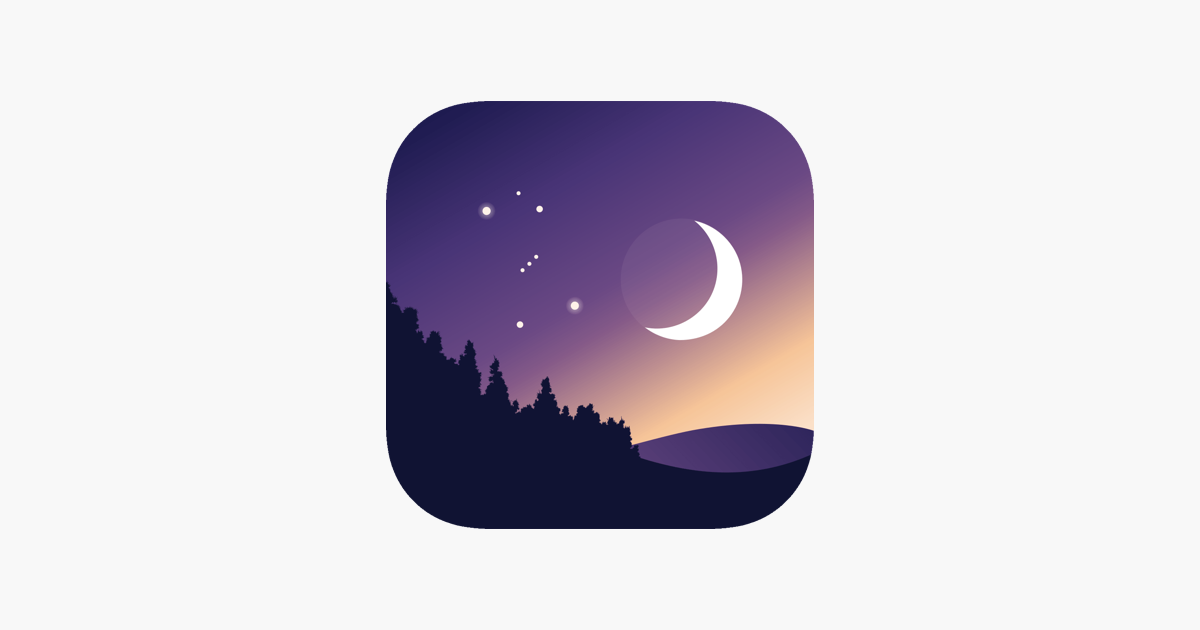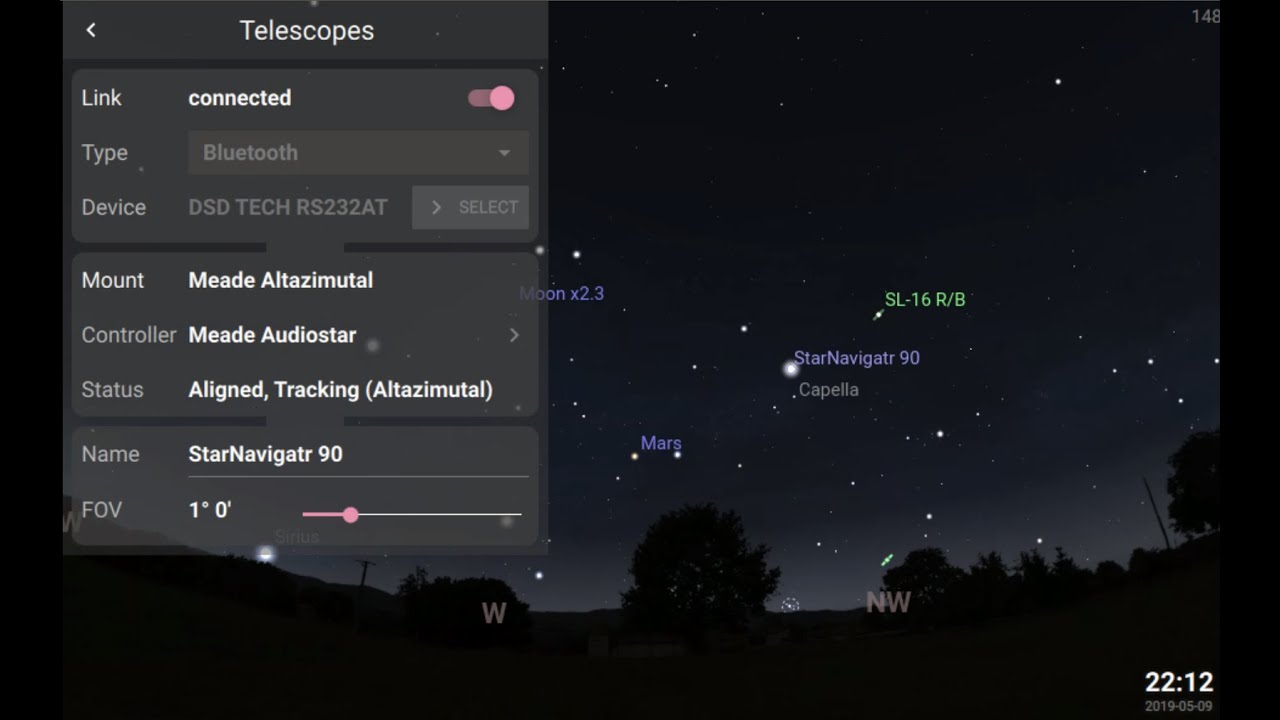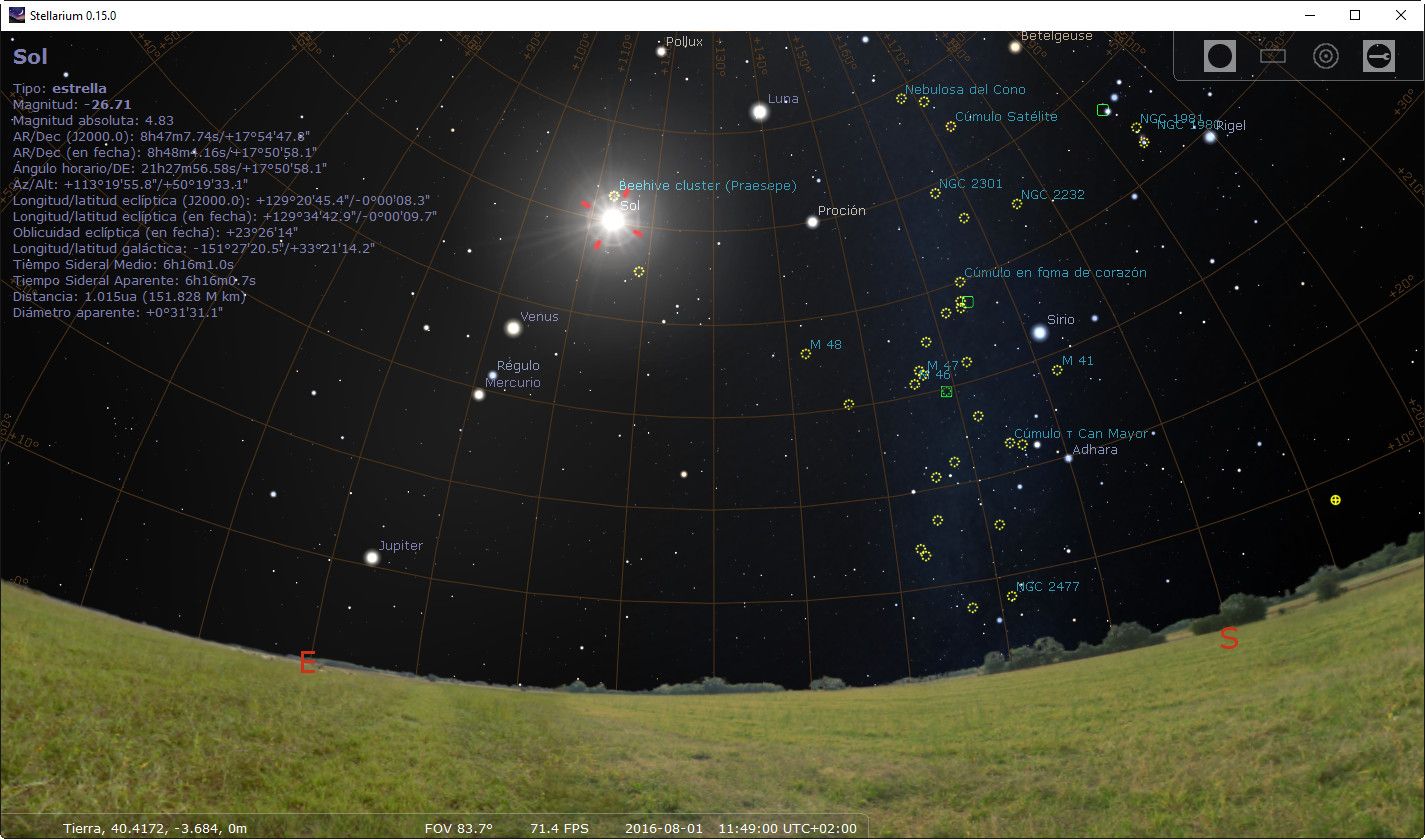- Explore the sky in real time with massive catalogs and night mode.
- Stellarium Plus adds Gaia DR2, millions of objects, and telescope control.
- Realistic simulations: atmosphere, eclipses, exoplanets and 3D landscapes.
- Tools for planning observations and using offline data in the field.

Stellarium Mobile It's a planetarium in your pocket that shows you the sky just as you would see it if you looked up on a clear night, with stars, constellations, planets, comets, satellites, and thousands of deep-sky objects just a tap away. Its minimalist and clear interface makes it easy to use for beginners and advanced hobbyists who want to identify the firmament in real time simply by pointing their mobile phone towards the celestial vault.
The application was born from the same team that created Stellarium for computers, a draft award-winning open source software that is highly recognized in the world of astronomy. On mobile, Stellarium retains its essence: visual fidelity, top-notch astronomical data and tools to plan and enjoy your observing sessions at any date, time, and location.
What is Stellarium Mobile and why it stands out
Stellarium Mobile – Star Map accurately reproduces the night sky from your location or anywhere in the world. In seconds, it allows recognize stars and constellations, locate planets, track comets and satellites (including the International Space Station) and explore extensive catalogues of Messier objects, nebulae, galaxies or star clusters.
The visual experience is one of its strong points: you can zoom in on the Milky Way and images of deep sky objects With a level of realism far superior to that of other apps, it also incorporates atmospheric simulation with realistic sunrises and sunsets, taking refraction into account to provide a more natural feel of the horizon and celestial dome.
To take care of your eyesight at night, Stellarium Mobile includes red night mode, so you don't lose dark adaptation when looking at the screen. All this is combined with 3D representations of the main planets of the Solar System and their satellites, making it ideal for both teaching astronomy and preparing observations.
Another differentiating aspect is its cultural focus: you can change the shapes and illustrations of the constellations to see how different cultures around the world interpret the sky, enriching learning and offering a comparative perspective of the firmament which goes far beyond traditional Western names.

Stellarium Plus: Extra Power and Huge Catalogs
The base version of the app is already very capable, but with the in-app purchase to unlock Stellarium Plus A significant leap in data depth and advanced features is achieved. On a purely observational level, the limiting magnitude of objects increases up to about 22 (compared to about 8 in the basic version), allowing you to view Very faint objects that only appear with suitable skies and equipment.
In data, Stellarium Plus opens the doors to massive catalogs: all stars in the Gaia DR2 catalog (more than 1,69 billion), virtually all of the known planets, satellites and comets, as well as tens of thousands of asteroids y more than 2 million deep-sky objectsIt is an invaluable resource for those who want to study the sky in detail and not be limited to the brightest classic Messier or NGC.
Another key advantage is access to high resolution images of deep sky objects and planetary surfaces, with a virtually unlimited zoom to explore every detail. If you go out into the field offline, the app can work with a reduced offline data set which includes about 2 million stars, about 2 million deep sky objects and about 10.000 asteroids, so You don't go blind even if there's no coverage.
For those who use astronomical equipment, Stellarium Plus allows control GOTO telescopes via Bluetooth or WiFi, being compatible with widely used protocols such as NexStar, SynScan and LX200. In addition, it incorporates planning tools that help to predict visibility and traffic hours of an object, optimizing each observation session.
Mobile use: navigation, accelerometer and planning
Navigation is as simple as slide your finger across the star map to move through the sky. If you don't touch the screen for a few seconds, accelerometer mode is activated and the app recognizes which area of the sky you are pointing your phone at, immediately showing the stars present in that direction.
With time controls, you can change the date and time to know what the sky will be like later, another day, or at another time of year. This feature is ideal for planning night photography, identify the best time to observe a constellation, or coincide with the passage of the ISS and other bright satellites.
If you are interested in the cultural perspective, Stellarium lets you switch between dozens of constellation cultures to see different names, figures and illustrations. And if your thing is observation with the naked eye or with binoculars, the night mode in red It preserves your dilated pupils so that the experience under the sky does not lose quality.
In your location or any other you choose, the app shows you how the stars will look throughout the year, which is useful for preparing astronomical getaways or deciding when to go hunting for the Milky Way with the camera and a wide angle.

Simulations, sky cultures and advanced visualization
Stellarium's graphics engine reproduces a realistic Milky Way and simulates atmosphere, sunrises and sunsets with great fidelity, including refraction near the horizon. This, added to images of nebulae (with the complete Messier catalog) and high-quality textures, makes recognizing structures and regions of the sky much more intuitive.
For the more technical, the app (and the project in general) offers precision elements such as coordinate grids (various systems), precession circles y star flicker simulated. Transient phenomena such as shooting stars and comet tails are also featured, along with simulations of eclipses, supernovae, and novae, and the location of exoplanets discovered around other stars.
The “eyepiece view” is another interesting tool: it simulates what you would see with a specific eyepiece, very useful for anticipating telescope framing. Add to this customizable 3D scenarios and landscapes —with spherical panoramic projection— that recreate the environment, achieving an immersive experience that hooks.
Interface and customization for all levels
The Stellarium interface is available in multiple languages, with clear time controls, quick searches, and powerful zoom. This minimalist design, in addition to its elegant design, makes learning to use the app a matter of minutes, even if it's your first time using a planetarium.
The desktop version of the project (from which Stellarium Mobile inherits philosophy and resources) incorporates a scripting interface to automate presentations, a fisheye projection for domes and projection with spherical mirror for home domes, in addition to keyboard control and an HTTP interface (web control and remote API). These signs speak of a mature, extensible platform designed for dissemination.
In customization, Stellarium supports Plugins for artificial satellites, eye simulation, telescope control, and moreYou can also add Solar System objects from online resources and create your own deep-sky objects, landscapes, or constellation images to suit your project or presentation.

Telescope control and field observation
If you have a telescope with a GOTO mount, Stellarium Plus allows you to connect it via Bluetooth or WiFi and move it directly from your mobile. Compatibility with NexStar, SynScan and LX200 covers a very high percentage of commercial teams, so You don't need additional software to align and aim to the desired object.
For outings without coverage, Stellarium charges a offline data package which keeps millions of stars and objects visible, so The star map is still useful even if you don't have internet.. If you add night mode and planning tools, you get an ideal app for observation and astrophotography outings in dark skies.
System requirements and technical compatibility
On mobile devices, Stellarium is designed for Android e iOS, with smooth performance on modern devices. On PC, the parent project recommends a 64-bit operating system (Linux/Unix, Windows or macOS) and a 3D graphics card with proper OpenGL support to enjoy the sky smoothly.
Minimum desktop requirements: 64-bit OS; Linux/Unix, Windows 7 or later or macOS 10.13 or later; OpenGL 2.1 and GLSL 1.3 (or OpenGL ES 2.0)512 MiB of RAM; 600 MiB of free disk space; keyboard and mouse, touchpad, or similar.
Licenses, prices, terms and privacy
Stellarium Mobile can unlock all its features through a single purchase or subscription, depending on the country and platform. Payment is managed through the store account (for example, iTunes on iOS) and the automatic renewal is activated unless you cancel it at least 24 hours before the end of the period. You can disable renewal at any time from your account settings after purchase.
For legal details, the app publishes its Privacy Policy en this link and Terms of Service en this page. It is advisable to read these documents if you manage subscriptions or in-app purchases.
Where to download and which version to choose
Stellarium Mobile is available in official stores for Android and iOS. The basic version is suitable for Get started, learn constellations, and plan simple outings; if you want extensive catalogs, telescope control, or advanced features, Stellarium Plus It is worth it for its greater depth and number of functions.
For those who enjoy nighttime observation, having Stellarium on your phone is practically essential: identify what you are seeing, suggests what to explore at every hour and makes it easy to share your passion for astronomy with family and friends with clear and engaging visualizations.
Editor specialized in technology and internet issues with more than ten years of experience in different digital media. I have worked as an editor and content creator for e-commerce, communication, online marketing and advertising companies. I have also written on economics, finance and other sectors websites. My work is also my passion. Now, through my articles in Tecnobits, I try to explore all the news and new opportunities that the world of technology offers us every day to improve our lives.